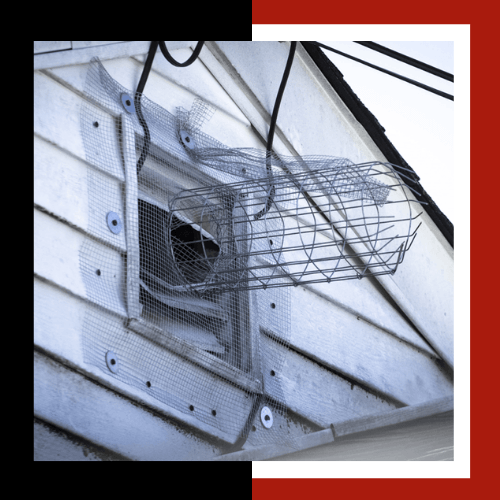
Wildlife Exclusion

Wildlife Exclusion
Finding out that wildlife has intruded your house or business can be upsetting. The fear of knowing there is a live creature in an unknown place and the chance of confronting it can be unsettling. When you add in the amount of damage they can cause and the unsanitary conditions they can leave behind, it’s good to know that Matt’s Animal Control is here to help. Before damage can be cleaned up and repaired, and during the trapping process, it is a priority to eliminate the openings the animals are using. This is called exclusion and is such a prominent piece of animal control that there is a Scientific Coalition On Pest Exclusion (SCOPE).
The exclusion process begins with a complete inspection of the property, inside and out. To the untrained eye, something as innocuous as a slight crack in the exterior stucco may not seem like much, but it may be a grand entryway to a mouse. The smells created by oils and urine left when squeezing through a hole can attract more and bigger rodents, like rats, making a bigger hole. They only need about a ½ inch opening to get in. To combat the invasion, we can use sealants on holes less than ½ inch. We use 24 gauge or higher galvanized sheet metal for larger holes or a high gauge wire mesh called hardware cloth with the sealant.
Not all entry points are created by animals, and many have essential functions. Birds, bats, raccoons, opossums, and rats are the usual suspects for entering through the chimney. All openings on the structure of the chimney itself must be sealed, and we clear out animals who are living in the chimney. We use a metal chimney cap made from stainless steel or copper to meet the local fire codes for the main opening. They have a solid roof to protect the chimney from water damage and can come in decorative models.
Roof and attic vents are another necessary evil that are direct openings that need to be protected, and they are a favorite of mice and bats. Stainless steel screens with a mesh size of ¼ inch are used, and we make sure that airflow is not restricted.
Bats are a federally protected species, so great care is taken in their removal and exclusion, and timing plays a vital role. From January until April, entry points should be sealed before returning to roost. From May until August, it is maternity season, and bat traffic is monitored at this time to locate how they are getting in. We use one-way doors once maternity season is over, so there is no getting back in once they leave.
Our experts are well versed in the habits of the local wildlife, so we can efficiently get them out and ensure they don’t return. In the Miami Valley, we are the top-rated wildlife exclusion service.
Contact us today for an estimate.
All Rights Reserved | Matts Animal Control LLC
